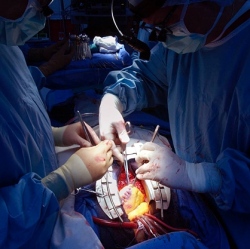
The conventional wisdom has it that there’s no silver bullet for treating cancer; the disease has too many forms for a one-size-fits-all solution. But there may be, if a recent pre-clinical animal study holds true, a gold bullet.The findings come from cell biologist Dmitri Lapotko, who leads a Rice University lab called The Nanobubble Lab.
Lapotko has found that when colloidal gold nanoparticles inside the body meet with a quick zap from a near-infrared laser, they burst and create a short-lived bubble that can blow up the cells around it. These hollow nanoparticles could be the golden bullet to target cancer. In a newly published study focused on notoriously hard-to-treat head and neck cancers, the conventional cocktail of chemotherapy and radiation was 17 times more potent when combined with nanoshells tagged with cancer-specific antibodies that cause them to cluster inside cancer cells.
Here’s what happened. The bubbles first blew up many of the cancer cells. Those that remained got another payload from the nanoparticles: chemotherapy drugs. With cell membranes damaged by the micro-explosion, the pharmaceutical payloads went directly into the cell cytoplasm. The remaining particles, clustered in the cancerous area, also served to magnify the X-rays delivering radiation.
